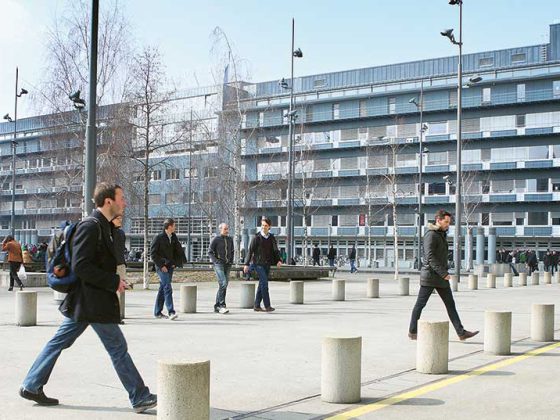Adults who suffered from cancer in childhood, for the most part, have little concern about their future health. This is not the case in reality: they are particularly at risk from the late effects of cancer therapy. Long-term follow-up is indicated.
Still, 31% of respondents showed no worries or concerns about their general health in the next few years. In just over 40%, this lack of concern included potential further cancers (i.e., time malignancies). While both scores were close to those of healthy siblings (comparison group), and thus survivors and controls were about equally positive about the future, expectations about general future health were higher with a
RR of 1.12 then just significantly worse.
Patients who were exposed to radiation doses of 20 Gy or more in the course of their treatment (and thus represent a special risk group for a wide variety of chronic diseases and disorders) were less likely to express concerns about their continued well-being, in the above order, but still remarkably unlikely to do so, at 24% and 35%, respectively. Yet they were significantly more likely to think about health risks than their healthy siblings.
Background
The data come from one of the world’s largest research projects on the subject, the Childhood Cancer Survivor Study. It is based on a cohort of nearly 36,000 patients who developed cancer in childhood and survived for five or more years. In order to make comparisons, 5000 healthy siblings were also included in the study. A total of 31 North American centers are participating, led and coordinated by St. Jude Children’s Research Hospital in Memphis. The U.S. Department of Health and Human Services’ National Cancer Institute (NCI) is subsidizing the study.
The present analysis was based on self-reported data from more than 15,000 cancer survivors and 4000 healthy siblings on future health and possible risk for (further) malignancies.
Interpretation of the results
When interpreting the study, it may at first seem counterintuitive, even cynical, to view fundamentally positive attitudes toward life such as carefreeness as problematic. Especially adults, who had to go through the hard fate of cancer in their childhood, are to be wished a good mental health and recovery yes especially. One thing is certain, however: the number of people living with cancer and the number of people with cancer is growing. survive them (however you define this – whether at five years or more) will continue to rise in the future. This is due to improved, also multimodal therapies (as well as supportive therapies) and care structures, as well as the increasingly aging population. The late effects of cancer are thus rightly coming increasingly into focus. The problem, especially with pediatric malignancies: Radiation and chemotherapy in particular can potentially cause a wide range of complications for years or even decades after the end of treatment. Data from the same study [1] show that patients become seriously ill or life-threatening at a rate of just over 30% more often than the average population of the same age after suffering from a tumor in childhood. The risk exceeds that of their siblings by a factor of eight (after age- and sex-adjustment). Chronic diseases in general were found three times more often in this vulnerable population. Whereas – and this also applies to the current analysis – equating siblings from the cohort and the general population is of course not always compelling (i.e., the comparison need not be representative).
In addition to cardiovascular and pulmonary diseases, second malignancies are usually considered to be mainly responsible for shortened life expectancy [2]. Some – especially those in or near the irradiated area that occur only after a longer latency period – can be relatively clearly attributed to radiation therapy. In others, chemotherapy also plays a critical role, directly or as a risk modulator concomitant with radiotherapy.
Giving hope and educating at the same time
Thus, it is not a matter of declaring all cancer sufferers to be patients for life or of not actively supporting them in their positive outlook on life and thus also in their psychological recovery. On the contrary, psychosocial late effects in particular are frequent and should be reduced, for example, by motivating people to exercise. Overall, focus on resilient long-term care and follow-up. The patients themselves should be allowed to look into the future without worries. However, caring physicians must stay on top of it and ensure that cancer survivors do not drop out of screening programs or adopt risk-promoting lifestyles (classics: smoking, sun exposure, alcohol, lack of exercise, etc.) [3]. The doctor-patient relationship gains in value through careful and timely information about late effects and possible risks of a survived cancer illness or disease. therapy in transparency and, through long-term support, in depth. The goal is to positively support the patient in maintaining his or her health.
In a nutshell
- More than one-third of all childhood cancer survivors are quite positive about their health future.
- This is a comparable value to the control group consisting of non-cancer patients.
- This perception does not fully reflect clinical reality.
Source: Gibson TM, et al: Perceptions of future health and cancer risk in adult survivors of childhood cancer: A report from the Childhood Cancer Survivor Study. Cancer 2018. D0I: 10.1002/cncr.31397 [Epub ahead of print].
Literature:
- Oeffinger KC, et al: Chronic health conditions in adult survivors of childhood cancer. N Engl J Med 2006 0ct 12; 355(15): 1572-1582.
- Mertens AC, et al: Late mortality experience in fiveyear survivors of childhood and adolescent cancer: the Childhood Cancer Survivor Study. J Clin 0ncol 2001 Jul 1; 19(13): 3163-3172.
- Earle CC, Neville BA: Under use of necessary care among cancer survivors. Cancer 2004; 101: 1712-1719.
InFo ONCOLOGY & HEMATOLOGY 2018; 6(6): 32.











